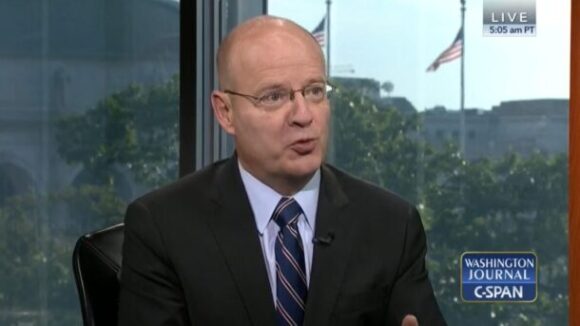Will Team Biden Weaponize Workers’ Pensions?
Big Labor abuse of worker pension and benefit funds as a means of advancing union bosses’ self-aggrandizing policy objectives is a familiar phenomenon.
Today the ban on forced union dues and fees adopted by legislators in Lansing, and signed into law by Gov. Rick Snyder, last December takes effect. That means Michigan is now officially America’s 24th Right to Work state.
The primary reason Michiganders battled successfully, with the assistance of National Right to Work Committee members and supporters nationwide, for their new law was one of principle: Like the vast majority of Americans nationwide, the vast majority of Michigan citizens believe the individual worker’s freedom not to join or bankroll a union deserves just as much protection under the law as his or her freedom to join a union and pay union dues.
But the experience of the 23 other Right to Work states strongly indicates that Michigan’s new law will promote accelerated job and compensation growth for employees. In a commentary for the Wall Street Journal today (see the link below), Arthur Laffer and Stephen Moore suggest that adoption of a state Right to Work law is a major step along the “red-state path to prosperity.”
I am neutral on the question of whether Michigan’s Right to Work law, assuming freedom-loving citizens defeat the inevitable Big Labor efforts to overturn it, will transform the political habits of a state that has been “blue” rather than “red” in the last six presidential elections, starting in 1992, when Bill Clinton won his first term in the White House.
But there are ample reasons to believe Right to Work will help bring prosperity to the Wolverine State’s long-troubled economy. Just last year, Indiana, which passed the 23rd Right to Work law a little more than 10 months before Michigan adopted the 24th, experienced a greater gain in compensation growth (including wages, salaries, bonuses and benefits) for private-sector employees than 43 out of the 50 states. Indiana’s inflation-adjusted private-sector compensation increase of 2.9% from 2011 to 2012 was 1.1 percentage points higher than the national average, according to the U.S. Commerce Department estimate published this week.
From 2002 to 2012, real compensation growth in Right to Work states (excluding Indiana and Michigan) was nearly thrice as great as in forced-unionism states.
As eminent statistician and Yale professor emeritus Edward Tufte has said, “Correlation is not causation but it sure is a hint.” It’s a safe bet that both Indiana and Michigan will, as long as their Right to Work laws remain in place, have compensation and job growth well above the national average for years to come.

Big Labor abuse of worker pension and benefit funds as a means of advancing union bosses’ self-aggrandizing policy objectives is a familiar phenomenon.

What impact does handing a union monopoly power to deal with your employer on matters concerning your pay, benefits, and work rules have on your pay?

Federal Labor Board has now certified majority decertification vote to end AFT union officials’ “representation” at KIPP Charter High School